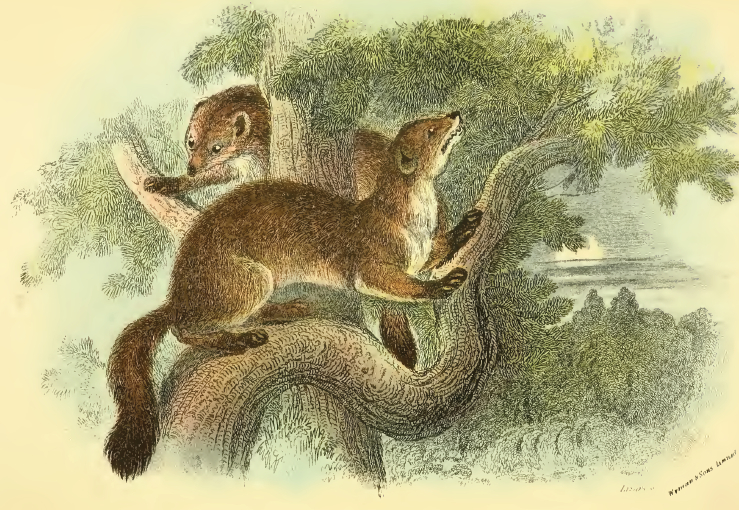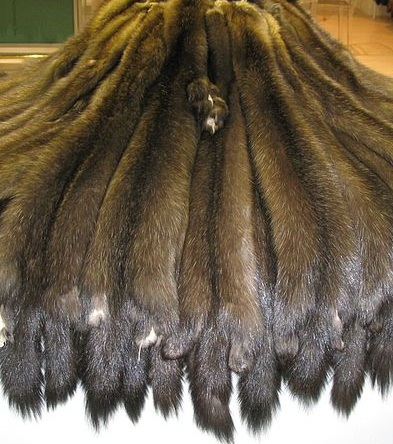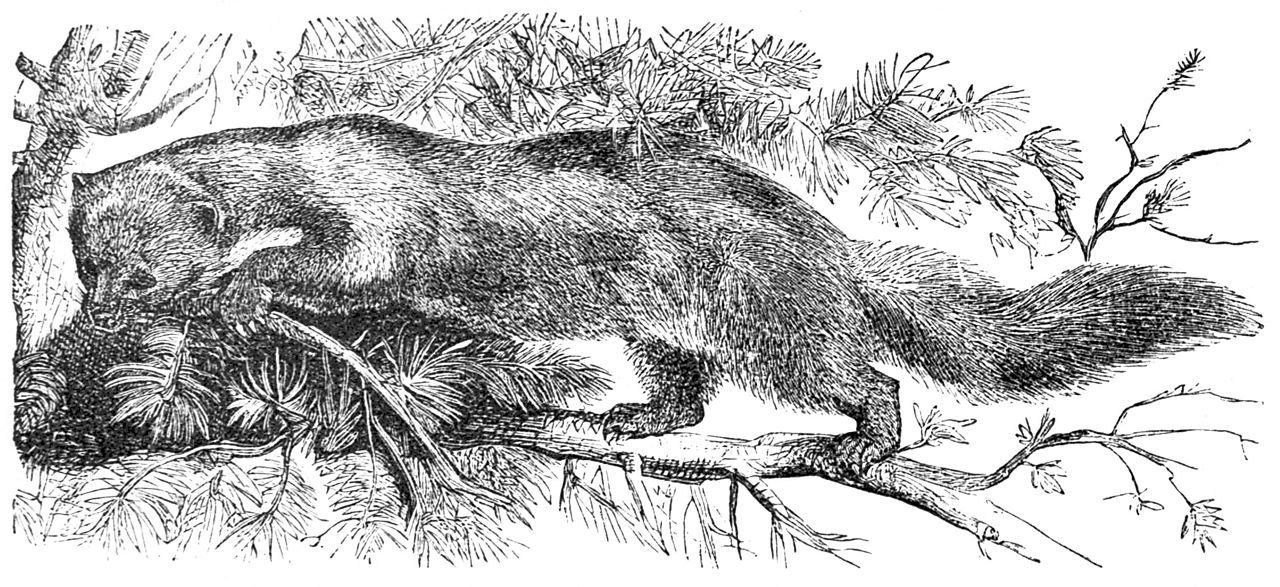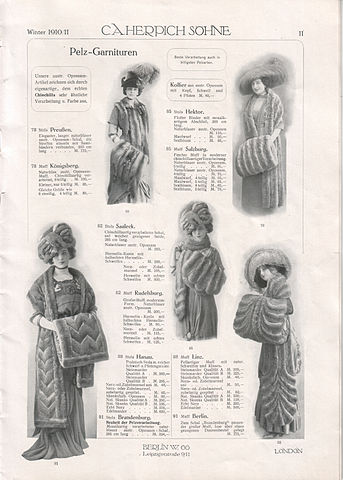Cebelin Fur
There are few things in the world that exude luxury more than cebelin fur. It's said to be more valuable than gold. Each pelt is worth its weight in silver, and there is a special way to skin them so that the entire hide stays intact. In Retland, there are no restrictions about who can own a cebelin garment, and it's very common for merchants to buy a cebelin scarf or muff as soon as they're able to afford one. As a girl, I used to marvel at the fur shawls through windows someday dreaming of being able to touch one, much less be able to afford it.Cebelin fur is a rare and luxurious fur that's commonly used for clothing. The sleek dark pelts mark the height of luxury, and they're prized for being soft and warm. The pelts are harvested from cebelins, a species of weasel that lives in the northern reaches of Tamaris. Though once numerous, the pelts are now a far rarer commodity, but demand for them only increases. The price and value of a cebelin coat restricts it to the highest echelons of society. To own one is to have an heirloom for generations.
Properties
Material Characteristics
Cebelin fur is a glossy dark-colored fur with short guard hairs and fine under hairs. The upper coat tends to range from dark brown to black, and darker and more uniform pelts are highly valued. The lower coat tends to be pale brown to slightly reddish. The fur should be somewhat water resistant and soft to the touch. After stroking the pelt against the direction of the fur, the guard hairs should immediately return to lying flat and not expose the softer under hair.

Pine Marten by Richard Lydekker
Geology & Geography
Cebelins are found throughout northern Tamaris and were once common in Retland, northern Samoir, and northern Petrek. However, over hunting has led to a significant decline in their populations, and most cebelins are only found in Retland and Petrek. They prefer living in forested mountains and are highly territorial. In 5013, there was an attempt to reintroduce cebelins to Samoir, but that attempt failed due to the animals being released too close together and not be able to establish a territory before winter set in. Cebelins raised in captivity produce poorer quality furs which are undesirable for garments.
History & Usage
Refinement
Trappers are responsible for skinning cebelins. They are skinned cased and sold to furriers fur out. Traditionally, the feet and claws were left attacked to the pelt, though most modern furriers prefer the claws and feet removed. While many furriers are also tailors, most of the southern tailors who deal with cebelin fur purchase it ready to be sewn into clothing. The upper coat and lower coat are separated, and the upper coats are carefully stitched together by hand. The furs must look seamless together, and the pelts are arranged so that the furs lie in the same direction. A special stitch is used to hold the edges of the pelt together while maximizing the use of the pelt. Uniformly colored pelts are easier to match and thus are more valuable.
Manufacturing & Products
The most common use for cebelin fur is clothing. Cebelin fur coats are extremely popular, and it takes around 60 cebelin pelts to make one full length coat. Scarves are the most common garment available requiring only two furs. In Retland, cebelin fur stoles and shawls are highly sought after with the most expensive being black shawls. Hats and muffs are the least common with moderate popularity among men and women.
Byproducts & Sideproducts
The lighter lower coat of the cebelins is used to line jackets and hoods. These garments are particularly popular with the middle class who want to own cebelin fur but can't afford the much higher cost of the upper coat. Less scrupulous tailors will dye the lower coat to a dark brown in order to pass it off as a more expensive product.
Distribution
Trade & Market
Cebelin fur is a luxury product that's only sold to the wealthy. Bespoke tailors are the primary purchasers of pelts where they turn them into garments for clients. In Etra, only state-approved tailors can legally sell cebelin fur clothing, and they are provided with a certificate of authenticity stamped by the government. Many people travel to Retland for clothing due to the lax restrictions on who can buy fur. In Samoir, cebelin fur was frequently associated with the monarchy and nobility, and the market for fur largely collapsed after the revolution. Although Petrek is a major producer of fur, their strict laws keep most sales within the country, and sales abroad go to select tailors with no room for newcomers into the market.
Storage
Pelts are stored fur out in bags that are kept in a cool, dark place with low humidity. They are always covered except when on display for traders in order to keep them clean. Once turned into clothing, the garment should be kept in a closet that's cool, dark, and dry. Cedar closets are best avoided. The garment should be in a bag to protect the fur from dust, and it shouldn't be crowded by other clothes. Mothballs are best avoided with fur due to moisture retention and leaving the fur with an unpleasant smell.
Law & Regulation
In Petrek, purchase of cebelin fur garments is restricted only to the nobility. It is illegal for non-aristocrats to go abroad, purchase cebelin fur, and bring it back into the country. Anyone caught doing so is faced with a fine equal to the value of the pelt, ten years imprisonment, and confiscation of the fur.
In Etra, cebelin fur is heavily taxed. It's most commonly imported through shipping routes, and high prices have led to a booming black market. Official vendors are required to sell fur garments with a certificate of authenticity in an attempt to curb fake cebelin fur sales. However, the demand for fur is so great that many are willing to purchase cheaper look-alike furs and pass them off as genuine.
Type
Biomaterial
Rarity
Rare
Color
Dark brown to black

Sable skins Bargusinski by Kuerschner
Ad for cebelin fur garments






Comments